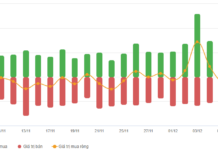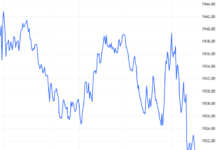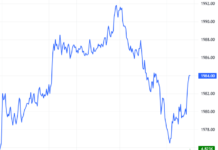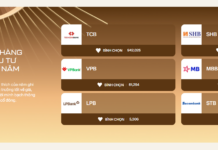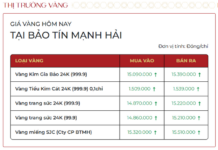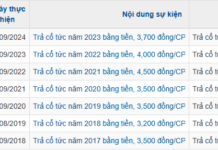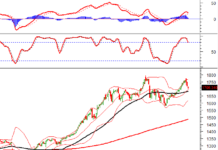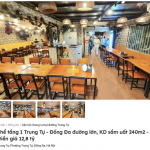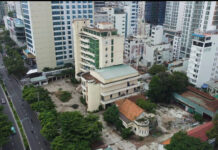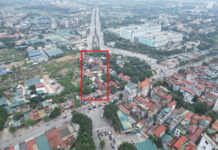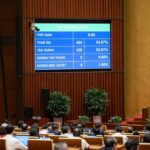According to various real estate research firm market reports, apartments continue to play a dominant role in the property market, leading in liquidity. In the second quarter, apartments accounted for over 70% of the supply and 75% of transactions in the primary market. Newly launched apartment projects, mainly priced above 50 million VND per square meter and concentrated in Hanoi, achieved impressive absorption rates of up to 90% in a short period.
Apartments remain the leading segment in the market. Specifically, the level of interest in Hanoi’s apartment market increased by 6%, and the number of listings rose by 6%. Notably, not only apartments but also other segments and types of properties witnessed growth in interest and the number of listings.
Hanoi’s apartment prices are on an upward trajectory, with the trend strengthening in the past two months. This surge comes after a period of stagnation in the market, where prices remained relatively stable for about a month and a half.
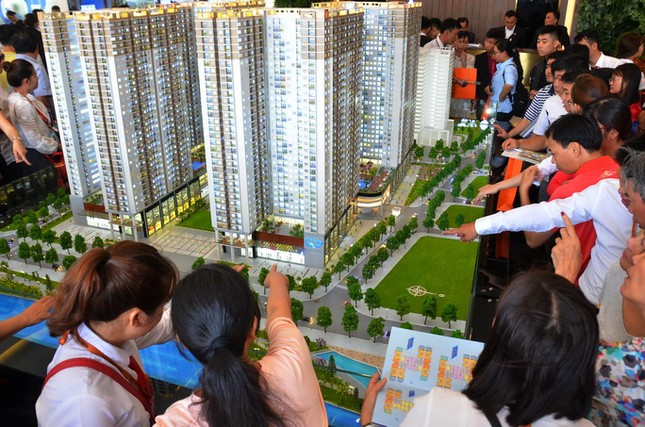
Apartment segment attracts investment capital.
Ms. Nguyen Thi Hong Van, Deputy Director of Valuation and Financial Advisory at Savills Hanoi, forecasts that, in the short term, residential property prices, especially apartment prices, will continue to rise due to limited supply in the market. In the second quarter of 2024, the supply of apartments decreased by 34% compared to the previous quarter and 25% from the same period last year, totaling approximately 2,700 units. Notably, 98% of this supply came from existing projects, with almost no new developments.
However, when the supply of apartments in Hanoi’s suburbs increases significantly from 2025 onwards, prices in these areas may struggle to maintain their rapid upward trajectory. This situation could ease the pressure on residential property prices in the long term, particularly in the suburbs.
Ms. Nguyen Hoai An, Senior Director of CBRE Hanoi, also observed that Hanoi’s apartment prices had experienced a significant upward trend in the first half of the year.
As of mid-2024, according to Ms. An, the price gap between Hanoi and Ho Chi Minh City apartments has narrowed. This gap was 30% five years ago, but it has now shrunk to around 10-15%. Looking back at the period between 2016 and 2017, Ho Chi Minh City’s apartment prices rose by 15-20% per year, and this situation is currently repeating in Hanoi. After a period of rapid growth, Ho Chi Minh City’s property prices have slowed down in recent years. Hanoi may follow a similar path.
Nonetheless, Ms. An assesses that while Hanoi apartments still have room for price growth, they are approaching Ho Chi Minh City’s prices, which may lead to a stabilization of prices.
According to the Vietnam Real Estate Brokers Association, in mid-July and the coming time, capital will certainly flow into the form of auctioned land in new urban areas and residential areas as localities organize many auctions to boost budget revenues. This type of land is clean, free from disputes and litigation, and already has a red book, infrastructure, and is ready for construction to generate monthly cash flow from leasing or renting.
Auctioned land is particularly attractive given that Hanoi has had almost no new projects in the past few years, and land supply is expected to become increasingly scarce due to the new Business Law, which prohibits land subdivision and plot sales in 105 cities and towns. In contrast, the demand for real estate, including both residential and investment purposes, remains robust and continues to grow.
The Association believes that the heat of the aforementioned land auctions will continue, and over time, it will gradually become commonplace. While supply will increase as localities promote land auctions, the starting prices will remain low because the land price tables issued by the Provincial People’s Committees according to the 2013 Land Law will continue to apply until December 31, 2025.
Chinese citizens flock to buy 280 tons of gold, realizing real estate and stocks are no longer a good investment channel
Regardless of the global decline in demand for gold, the purchasing power of Chinese citizens has propelled the price of gold to surpass the $2,000 per ounce threshold in 2023.


